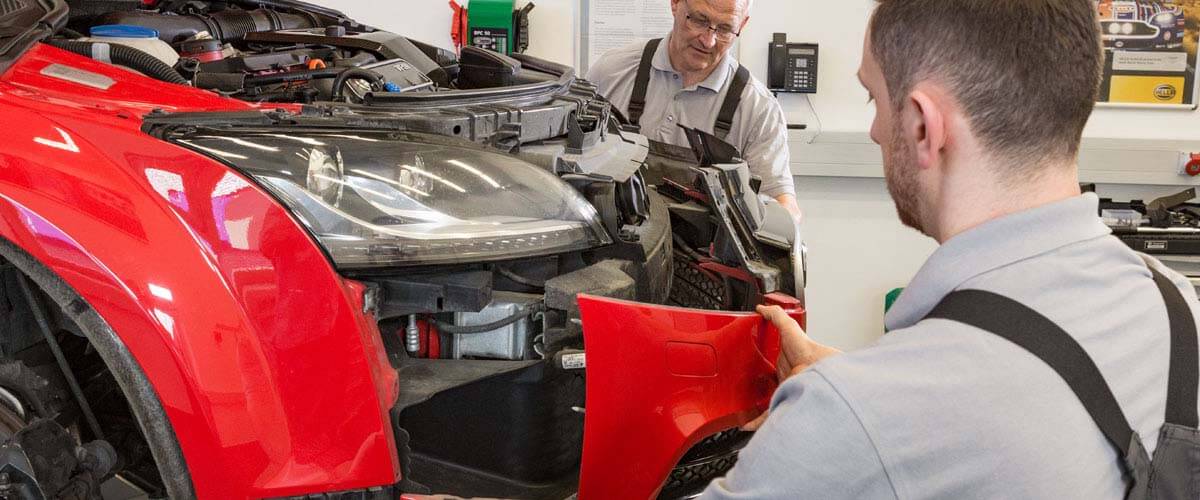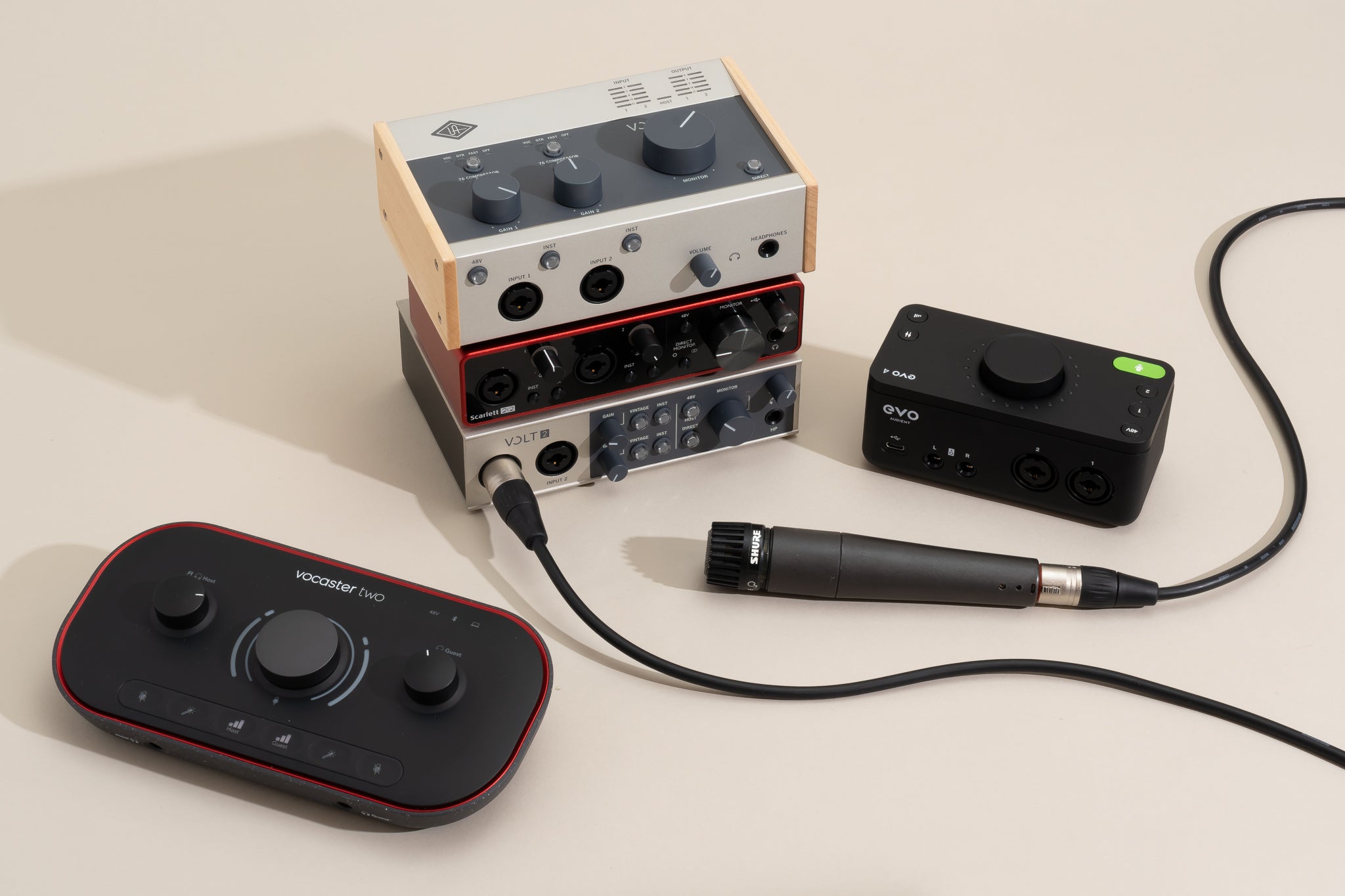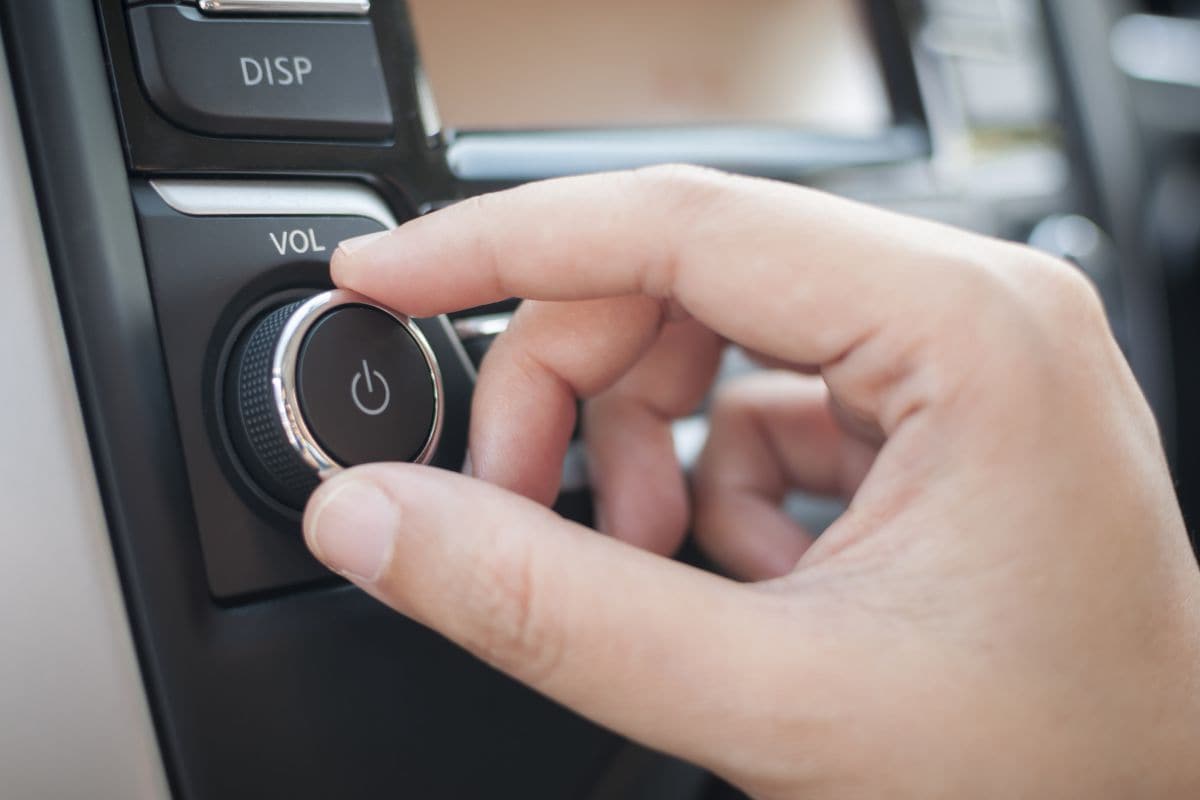Home>Production & Technology>Sound>How To Make Your Car Sound Louder


Sound
How To Make Your Car Sound Louder
Modified: January 22, 2024
Learn how to make your car sound louder with our expert tips and tricks. Enhance the sound quality of your vehicle with simple modifications and unleash the power of your car's sound system.
(Many of the links in this article redirect to a specific reviewed product. Your purchase of these products through affiliate links helps to generate commission for AudioLover.com, at no extra cost. Learn more)
Table of Contents
Introduction
When it comes to car modification, one aspect that always captures enthusiasts’ attention is the sound. A loud and aggressive exhaust note not only adds an appealing aesthetic to your vehicle but also enhances the overall driving experience. Whether you’re a car enthusiast looking to turn heads on the street or someone who simply enjoys the adrenaline rush of a powerful engine roar, there are several ways to make your car sound louder.
In this article, we will explore various methods to achieve that deep and thunderous exhaust note that will make your car stand out. From upgrading your exhaust system to installing electronic sound enhancement devices, we’ll cover all the options that can give your car the powerful and attention-grabbing sound you desire.
Before we dive into the different techniques, it’s important to note that modifying your car’s sound should be done responsibly and within legal limits. It’s essential to consider local noise regulations and be mindful of the impact your modifications may have on your surroundings.
Now, let’s get started and explore the various methods you can use to make your car sound louder!
Choosing a High-Performance Exhaust System
One of the most effective ways to make your car sound louder is by upgrading to a high-performance exhaust system. The exhaust system plays a crucial role in determining the sound produced by your vehicle. By replacing the stock exhaust system with an aftermarket one, you can achieve a deeper, more aggressive exhaust note.
When choosing a high-performance exhaust system, there are a few key factors to consider. Firstly, you’ll want to decide whether you prefer a cat-back or an axle-back exhaust system. A cat-back system replaces the exhaust system components starting from the catalytic converter, while an axle-back system only replaces the components from the rear axle onward.
Next, consider the material of the exhaust system. Stainless steel is a popular choice as it offers durability and corrosion resistance. Additionally, you may have options for different muffler designs, such as straight-through or chambered mufflers, each providing a distinct sound profile.
Another consideration is the diameter of the exhaust piping. Generally, a larger diameter can result in a deeper and louder exhaust note. However, it’s important to strike a balance as an excessively large diameter may compromise exhaust flow and overall performance.
Lastly, it’s essential to choose an exhaust system from a reputable manufacturer known for producing high-quality products. Research customer reviews and consult with car enthusiasts or professionals to ensure you select a system that will deliver the desired sound and performance.
Once you’ve chosen the right high-performance exhaust system, make sure to have it installed by a professional. Proper installation is key to ensure optimal performance and avoid any leaks or issues that could impact the sound or performance of your vehicle.
Upgrading to a high-performance exhaust system is a popular choice among car enthusiasts to achieve a louder and more aggressive exhaust sound. Not only will it enhance the auditory experience, but it can also provide performance gains in terms of horsepower and torque.
Installing a Performance Air Intake
Another way to make your car sound louder is by installing a performance air intake. The air intake system is responsible for supplying air to the engine for combustion. By upgrading to a performance air intake, you can increase the airflow to your engine, resulting in a more aggressive engine sound.
Traditional stock air intake systems are designed to minimize engine noise and meet various noise emission regulations. They often feature restrictive air filters and intake tubing, which can limit the amount of air entering the engine and potentially muffle the sound.
A performance air intake, on the other hand, is designed to optimize airflow and increase horsepower. These aftermarket intakes often replace the stock air filter with a high-flow performance air filter, allowing for a greater volume of air to enter the engine. The intake tubing is also designed to minimize restrictions and promote smoother airflow.
The increased airflow provided by a performance air intake can contribute to a more aggressive engine sound, especially under heavy acceleration or high RPMs. The sound enhancement is a result of the increased air intake noise mixing with the engine’s exhaust note.
When choosing a performance air intake, it’s important to consider factors such as compatibility with your vehicle’s make and model, as well as the manufacturer’s reputation for quality and performance. Additionally, it’s crucial to follow the installation instructions provided by the manufacturer or seek professional help to ensure proper installation.
It’s worth noting that while installing a performance air intake can enhance the sound of your car, it may not produce as dramatic of a change as upgrading the exhaust system. The sound improvement will vary depending on the specific vehicle and the combination of modifications.
By installing a performance air intake, you can maximize the airflow to your engine and achieve a more aggressive engine sound. However, it’s important to research and choose a well-designed intake system from a reputable manufacturer to ensure both sound enhancement and performance benefits.
Upgrading the Exhaust Headers
If you’re looking to take your car’s sound to the next level, upgrading the exhaust headers can make a significant difference. The exhaust headers, also known as exhaust manifolds, play a crucial role in guiding exhaust gases from the engine cylinders to the exhaust system.
Stock exhaust headers are designed for efficiency and emission regulations, often featuring restrictive designs that limit exhaust flow. By upgrading to performance exhaust headers, you can improve exhaust flow and create a more aggressive exhaust note.
Performance exhaust headers are typically constructed from high-quality materials such as stainless steel or ceramic-coated steel. They are designed with larger diameter pipes and smoother bends to optimize exhaust gas flow. These improvements minimize restrictions in the exhaust system, allowing for better scavenging and increased engine efficiency.
When upgrading exhaust headers, it’s crucial to consider compatibility with your specific vehicle make and model. Performance headers are often available in different configurations, including short tube and long tube designs. Short tube headers are easier to install and provide improvements in the mid-range RPMs, while long tube headers offer better gains in the high RPM range.
Upgrading the exhaust headers should be done carefully, considering other modifications you have made or plan to make. It’s important to ensure that the rest of the exhaust system can handle the increased flow and that the modifications comply with emission regulations in your area.
It’s also worth noting that upgrading the exhaust headers may require professional installation or advanced DIY skills, as it involves working with critical engine components. Proper installation is necessary to ensure that the headers are securely fitted and sealed to prevent any leaks.
By upgrading the exhaust headers, you can unleash the true potential of your engine and achieve a more aggressive exhaust sound. However, keep in mind that the sound improvement may be more noticeable at higher RPMs, making this modification ideal for those seeking a sportier and more aggressive driving experience.
Installing a Cat-Back Exhaust System
If you’re looking for a comprehensive solution to make your car sound louder, installing a cat-back exhaust system is a popular choice among car enthusiasts. A cat-back exhaust system replaces the components of the exhaust system from the catalytic converter to the rear of the vehicle.
One of the key advantages of a cat-back exhaust system is that it provides a simple bolt-on installation, making it relatively easy to upgrade your vehicle’s exhaust. Additionally, it allows you to retain the factory catalytic converter, ensuring compliance with emissions regulations.
A cat-back exhaust system typically includes components such as the muffler, resonator, exhaust pipes, and exhaust tips. By upgrading to a performance-oriented cat-back system, you can achieve a more aggressive and sporty exhaust note.
The muffler is a critical component of the exhaust system that influences the sound produced by your vehicle. Performance mufflers are designed to reduce restrictions and enhance the overall sound quality. They often feature straight-through designs or unique internal baffles to create a deep and throaty exhaust note.
Resonators are another component of the cat-back exhaust system that can influence the sound characteristics. They help to eliminate specific frequencies or drone that may be present in the exhaust system, resulting in a cleaner and more pleasing exhaust note.
When choosing a cat-back exhaust system, consider factors such as the material, muffler design, and sound profile. Stainless steel is a popular choice for its durability and resistance to corrosion. Additionally, you can opt for different exhaust tip designs to customize the aesthetic appeal of your vehicle.
It’s important to follow the manufacturer’s instructions for installation or seek professional assistance to ensure the cat-back exhaust system is properly fitted and aligned. Proper installation will help prevent any leaks, rattles, or issues that could affect the sound quality and performance of your vehicle.
By installing a cat-back exhaust system, you can achieve a more pronounced and aggressive exhaust sound. The combination of upgraded components, such as performance mufflers and resonators, contributes to a more exhilarating driving experience.
Adding a Resonator Delete or Muffler Delete
If you’re seeking a more daring and bold sound from your car’s exhaust system, considering a resonator delete or muffler delete can deliver the desired results. These modifications involve removing specific components of the exhaust system to achieve a louder and more aggressive exhaust note.
A resonator delete involves removing the resonator, which is responsible for reducing exhaust drone and certain frequencies. By eliminating the resonator, the exhaust sound becomes louder and more pronounced. This modification is commonly performed on vehicles that have excessive drone or for those looking to achieve a more aggressive sound.
On the other hand, a muffler delete involves completely removing the muffler from the exhaust system. The muffler is designed to reduce noise levels and create a quieter exhaust note. By removing the muffler, the exhaust sound becomes much louder and more aggressive. However, it’s important to note that a muffler delete may not be legal in some areas due to noise regulations. Always check your local laws and regulations before proceeding with this modification.
It’s crucial to consider the potential drawbacks of these modifications. Removing the resonator or muffler can result in increased exhaust noise and potentially affect the performance and fuel efficiency of the vehicle. Additionally, these modifications may not be suitable for daily driving or long-distance trips, as the increased noise levels can become tiresome over time.
When considering a resonator delete or muffler delete, it’s important to weigh the pros and cons. It may be beneficial to consult with professionals or experienced car enthusiasts to determine the best course of action based on your preferences and driving needs.
Whether you choose a resonator delete or muffler delete, it’s crucial to ensure that the modifications are done correctly and professionally to prevent any issues or damage to your vehicle. Take into account the impact on the overall exhaust system and the legality of the modifications in your area before proceeding.
Adding a resonator delete or muffler delete can provide a significant change in your car’s exhaust sound, offering a louder and more aggressive tone. These modifications are popular among car enthusiasts who want to stand out and make a bold statement with their vehicle’s exhaust note.
Installing an Electronic Sound Enhancement Device
If you’re looking for a flexible and customizable option to enhance your car’s sound, installing an electronic sound enhancement device can be an excellent choice. These devices are designed to modify and amplify the exhaust sound digitally, allowing for precise control and adjustments.
An electronic sound enhancement device, often referred to as an exhaust sound synthesizer or sound generator, works by intercepting the audio signals from the engine and manipulating them to create an enhanced and more aggressive exhaust sound. These devices are typically connected to the vehicle’s audio system or integrated into the engine management system.
One of the key benefits of an electronic sound enhancement device is the ability to adjust the sound according to your preferences. Most devices come with various sound profiles or settings, allowing you to choose the level of aggressiveness or sportiness desired. Some devices even feature smartphone apps or remote controls for easy customization on the go.
The installation process and complexity of these devices may vary depending on the specific brand and model. It’s important to carefully follow the manufacturer’s instructions or seek professional assistance to ensure proper installation and integration with your vehicle’s existing systems.
Electronic sound enhancement devices offer a range of advantages beyond just the ability to make your car sound louder. They provide the flexibility to change the exhaust sound characteristics without the need for major modifications or alterations to your exhaust system. Additionally, they can deliver a consistent sound experience regardless of engine load or RPM.
However, it’s essential to note that electronic sound enhancement devices may not be legal in all regions or comply with local noise regulations. Always check the laws in your area before proceeding with the installation.
Adding an electronic sound enhancement device can give you the freedom to customize your car’s exhaust sound to match your preferences and driving style. Whether you want a deep and menacing rumble or a thunderous roar, these devices provide a convenient and adaptable solution to make your car sound louder.
Adding Performance Camshafts
If you’re looking to not only make your car sound louder but also improve its overall performance, adding performance camshafts can be a game-changer. Camshafts play a crucial role in controlling the intake and exhaust valves’ timing and duration, directly impacting engine performance and sound.
Stock camshafts are designed with a balance between power, fuel efficiency, and smooth operation. However, by upgrading to performance camshafts, you can optimize valve timing and lift to achieve more power and a more aggressive exhaust note.
Performance camshafts are specifically designed to provide additional lift and duration, resulting in improved airflow into the engine and enhanced exhaust flow. This increase in airflow can lead to a more pronounced engine sound, especially at higher RPMs.
When choosing performance camshafts, it’s crucial to consider your vehicle’s specific engine characteristics, including displacement, compression ratio, and valvetrain. It’s recommended to consult with a knowledgeable professional or engine tuner who can help identify the right camshaft profiles for your specific engine setup.
Installation of performance camshafts is a more involved process and typically requires professional expertise. The camshaft installation involves removing the cylinder heads and disassembling portions of the engine. Proper installation and precise camshaft timing are crucial to ensure optimal performance and avoid any damage to the engine.
It’s important to note that adding performance camshafts may require additional modifications or upgrades to complement the increased airflow and power potential. These modifications can include upgrading intake and exhaust systems, fuel injectors, and engine tuning. It’s essential to take a comprehensive approach and ensure that all components work together harmoniously.
By adding performance camshafts, you can not only accomplish a louder and more aggressive exhaust sound but also unlock additional horsepower and torque from your engine. This modification is recommended for those seeking significant performance gains and a thrilling driving experience.
Conclusion
Making your car sound louder can be a thrilling way to enhance your driving experience and turn heads wherever you go. From upgrading your exhaust system to installing performance air intakes, there are various methods to achieve that deep and aggressive exhaust note you desire. Each modification has its own merits and considerations, so it’s essential to choose the approach that best fits your preferences and vehicle.
Upgrading to a high-performance exhaust system and installing a performance air intake are effective ways to achieve a louder and more aggressive sound. These modifications optimize airflow and exhaust flow, resulting in a deeper and more pronounced engine note. Additionally, upgrading exhaust headers can further enhance the exhaust sound, particularly at higher RPMs.
If you’re looking for a more customizable solution, electronic sound enhancement devices offer the flexibility to adjust your car’s exhaust sound to match your personal preferences. These devices digitally manipulate audio signals to create a more aggressive and sporty exhaust note.
For those seeking both a louder sound and improved performance, adding performance camshafts can provide significant gains in both power and exhaust sound. However, this modification requires careful consideration of your specific engine setup and professional installation.
Whether you choose one method or a combination of several, it’s important to research the local laws and regulations regarding modified exhaust systems in your area. Always ensure that any modifications you make comply with these standards.
Remember, making your car sound louder should be done responsibly and within legal limits. It’s important to strike a balance between achieving the desired sound and respecting noise regulations and the peace of those around you.
So, unleash the deep and aggressive growl of your car’s exhaust and enjoy the thrilling experience of a powerful and attention-grabbing sound. Explore the various methods discussed in this article, consult with professionals if needed, and embark on your journey to creating a signature sound for your vehicle.











